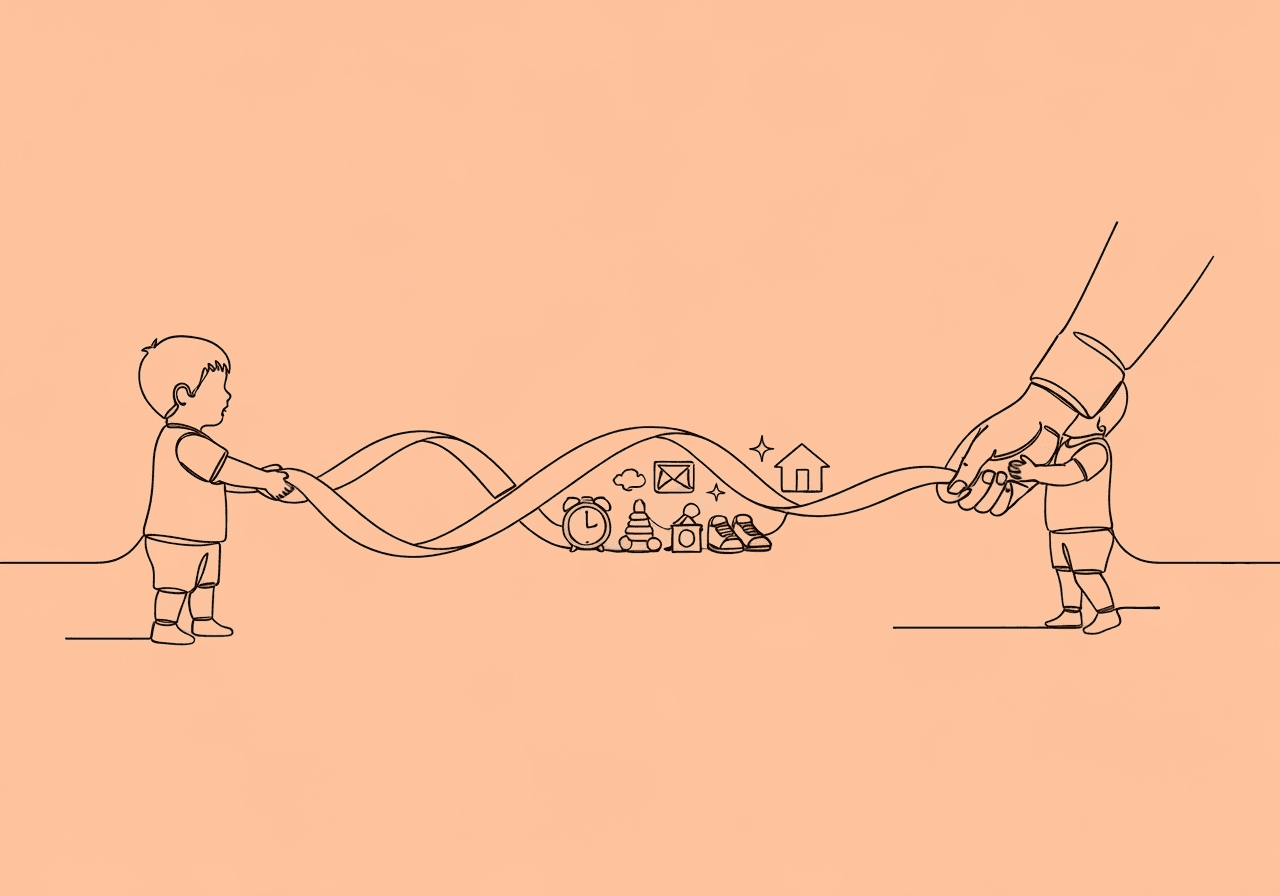Understanding ABA Progress Notes for Parents (Without the Overwhelm)

Getting your child's weekly ABA session notes can feel overwhelming at first. Those abbreviations, percentages, and clinical terms might seem like a foreign language, but here's the thing - understanding ABA progress notes for parents is actually one of the most powerful ways you can support your child's development at home.
What many parents don't realize is this: families who actively engage with their child's therapy process see significantly better outcomes. A retrospective chart review published in JMIR Pediatrics in October 2024 found that parent-led ABA approaches achieved statistically significant improvements across communication, social skills, and emotional regulation, with p-values ranging from 0.001 to 0.045. When you know how to read those notes, you become your child's strongest advocate.
Let me walk you through exactly what those notes mean and how you can use them to help your child thrive.
What Are ABA Progress Notes?
These detailed records document exactly what happened during your child's therapy session. Think of them as a play-by-play report that tracks three essential things:
- What skills were practiced (the goals)
- How your child performed (the data)
- What happens next (the plan)
Unlike vague summaries saying "Johnny did well today," quality ABA notes use specific numbers and observations. You'll see things like "Johnny correctly identified 18 out of 20 flashcards independently (90% accuracy)."
But why does this level of detail matter? Because precision drives progress.
Decoding the Key Sections
Goals and Objectives
This section tells you exactly what your child worked on during the session. Common goal areas include:
Communication goals might target "requesting preferred items using 2-word phrases" or "answering 'what' questions about familiar objects."
Social skills goals could focus on "initiating play with peers" or "taking turns during structured activities."
Daily living skills might include "completing hand-washing routine with minimal prompts" or "putting on shoes independently."
When you see these goals, think about how they connect to your child's daily life. That "requesting help" goal? It means your child is learning to ask for assistance instead of getting frustrated.
The Data Section (Your Child's Report Card)
This is where numbers tell the real story. Here's how to read common data formats:
Trial-by-trial data: "15/20 correct (75%)" means your child succeeded on 15 out of 20 attempts.
Prompt levels: Research consistently shows prompt reduction tracking as crucial for measuring independence:
- Independent: No help needed (this is the goal!)
- Gestural prompt: Pointing or visual cue
- Verbal prompt: Spoken reminder
- Physical prompt: Hand-over-hand assistance
Behavioral observations: Instead of subjective descriptions, look for specific counts like "2 instances of task refusal, each lasting under 30 seconds."
Understanding SOAP Notes
Many ABA programs use the SOAP format, which organizes information systematically:
Subjective: What you reported about behaviors at home
Objective: Measurable observations during the session
Assessment: The therapist's professional interpretation
Plan: Next steps and strategies
This format helps you see how your home observations directly connect to therapy goals and adjustments.
Common ABA Terminology Decoded
Reinforcement = Rewards that encourage positive behavior (praise, stickers, preferred activities)
DTT (Discrete Trial Training) = Structured teaching using repeated practice of specific skills
NET (Natural Environment Training) = Learning skills during everyday activities and play
Baseline = Your child's starting performance level
Mastery criteria = The performance level that shows a skill is truly learned (often 80% accuracy across multiple sessions)
Generalization = Using learned skills in new situations or with different people
Don't let these terms intimidate you. Each one represents a specific way your child is learning and growing.
Reading Between the Lines: What to Look For
Progress Indicators
Watch for upward trends in percentages over time, reduced prompt levels needed, and faster task completion. Studies consistently demonstrate that when parents understand and track these indicators, children make faster progress.
Red Flags That Need Discussion
- Consistently declining performance without explanation
- Same prompt level for weeks without progression
- Frequent behavioral incidents without intervention adjustments
- Vague language instead of specific data
Questions to Ask Your Team
"What does this percentage mean for daily life skills?"
"How can I practice this goal at home?"
"When should we expect to see this skill generalize?"
"What's the plan if progress stalls?"
Don't hesitate to ask these questions. Good providers welcome parent involvement and should explain everything in parent-friendly language.
Making Notes Work for Your Family
Create a Simple Tracking System
Keep a folder (digital or physical) with your child's notes organized by date. This helps you spot patterns and celebrate improvements over time.
Consider using digital note-taking tools to track trends more easily. Some parents find success with simple spreadsheets that highlight key data points week by week.
Connect Notes to Home Practice
If the notes show your child mastered "requesting help" at 85% accuracy, practice this skill during homework time or chores. The more you reinforce therapy goals at home, the faster your child progresses.
Share Your Observations
Your input matters enormously. If notes show challenges with transitions but you've noticed improvement at home, share that information. The 2024 JMIR Pediatrics research found that comprehensive treatment plans with strong family involvement demonstrated significant gains in communication and emotional regulation compared to other approaches.
Reading ABA Notes: Your Daily Practice
ABA data for families becomes most valuable when you review it regularly. Set aside 10 minutes weekly to review your child's notes. Look for patterns, celebrate wins, and identify areas where you can provide extra support at home.
Remember - this parent guide ABA therapy approach isn't about becoming a therapist yourself. It's about understanding your child's journey so you can be their best cheerleader and advocate.
Plus, when you understand the data, those parent-teacher conferences become much more productive. You'll know exactly what questions to ask and what progress to celebrate.
Reading ABA notes Made Simple
Start small. Pick one section of the notes to focus on each week. Maybe this week you'll pay special attention to prompt levels. Next week, look at the behavioral data.
The key is consistency, not perfection.
ABA Data FAQs for Families
Q: How often should I receive progress notes?
A: Most programs provide brief notes after each session, with comprehensive progress reports monthly or quarterly.
Q: What if I don't understand something in the notes?
A: Always ask for clarification. Quality providers welcome questions and should explain terms clearly.
Q: Should notes include negative behaviors?
A: Yes, but they should be documented objectively with intervention strategies, not just complaints.
Q: How do I know if my child is making good progress?
A: Look for consistent upward trends in data, reduced prompting needs, and skills appearing in new settings.
Q: What if progress seems slow?
A: Discuss concerns with your team. Sometimes goals need adjustment or different teaching strategies.
Q: Can I request changes to how notes are written?
A: Absolutely. Many programs can adjust their documentation style to be more family-friendly while maintaining clinical accuracy.
Your Next Steps
Understanding your child's ABA progress notes transforms you from a passive observer to an active partner in their development. Start by reviewing your latest notes with this guide in hand, then schedule time with your therapy team to discuss any questions.
Remember: these notes aren't just paperwork - they're a roadmap showing exactly how your child is growing and what you can do to support that growth every single day. When families truly understand the data, children make faster, more meaningful progress that lasts.
The best part? Once you learn this "language," you'll start noticing your child's progress everywhere - not just in therapy sessions, but during dinner conversations, playground interactions, and quiet moments at home. That's when you'll know the real magic is happening.
Popular in Family Resources
- 1
Autism Aggression Family Guide: Working with ABA Teams
30112 min read - 2
ABA Treatment Plan for Parents: Essential Guide
2626 min read - 3
Reinforcement Schedule Fading for Parents: ABA Essentials
2476 min read - 4
ABA Session Data for Parents: Unlock and Interpret
2117 min read - 5
How to Write Social Stories for Parents: ABA Tips
2108 min read
Popular in Family Resources
- 1
Autism Aggression Family Guide: Working with ABA Teams
30112 min read - 2
ABA Treatment Plan for Parents: Essential Guide
2626 min read - 3
Reinforcement Schedule Fading for Parents: ABA Essentials
2476 min read - 4
ABA Session Data for Parents: Unlock and Interpret
2117 min read - 5
How to Write Social Stories for Parents: ABA Tips
2108 min read
Related Resources
Explore more helpful content on similar topics

ABA Session Data for Parents: Unlock and Interpret
Unlock ABA session data for parents: interpret progress reports, decode jargon, apply home carryover strategies, and communicate effectively with your BCBA. Empower your role in your child's autism therapy success.

ABA Home Data IEP: Empower Parent Advocacy
Empower your IEP advocacy with ABA home data IEP strategies. Discover how parents can collect objective home data, create compelling reports, and collaborate for stronger, measurable goals tailored to your child's needs.

ABA Progress Report for Parents: A Beginner's Guide
Discover how to read your child's ABA progress report for parents. Learn to interpret goals, data trends, and home observations to support reauthorization and continued autism therapy services.